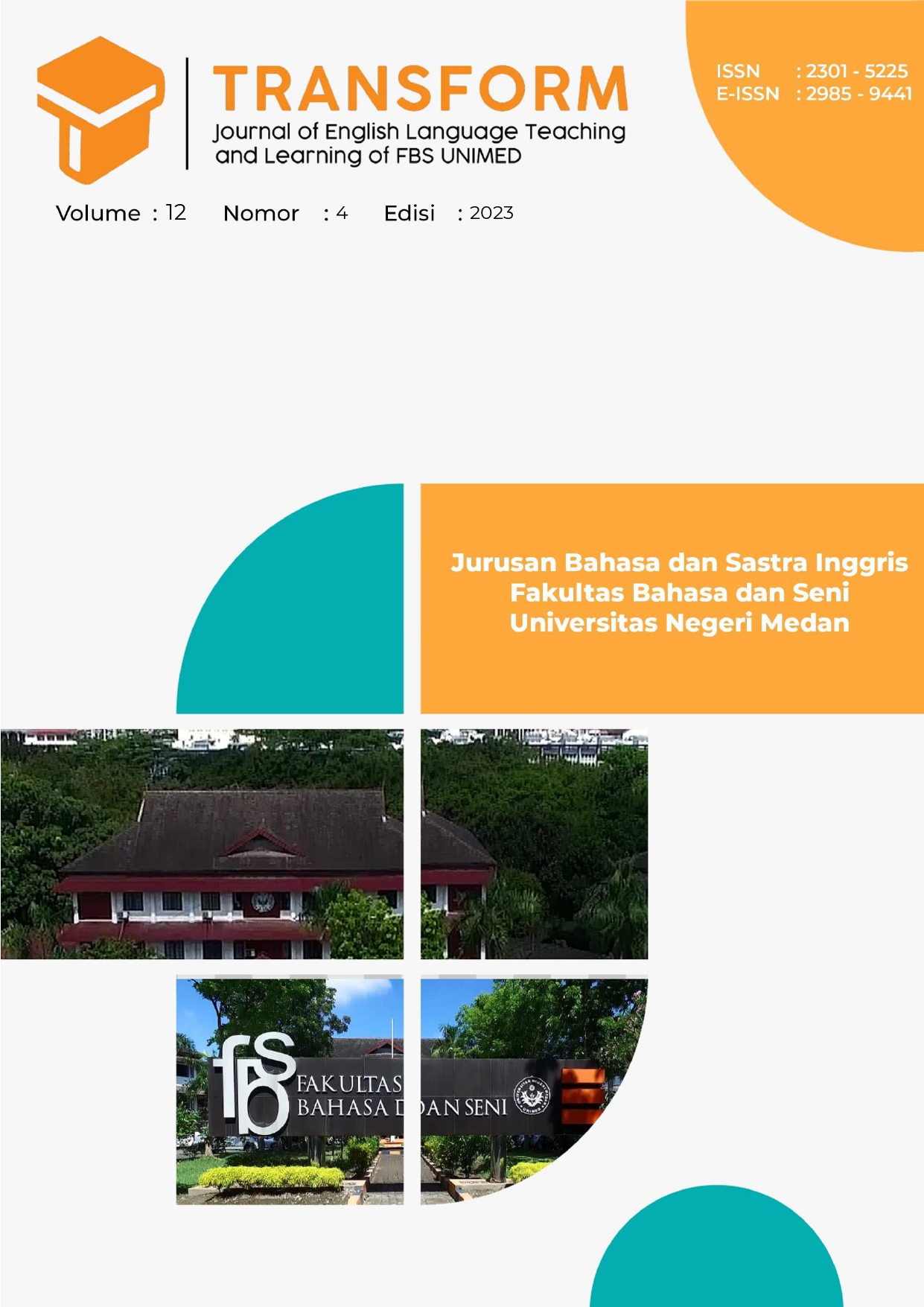Sarcastic Utterance in Mel Gibson™s Movie Hacksaw Ridge
DOI:
https://doi.org/10.24114/tj.v12i4.57582Keywords:
Sarcastic Language, Mel Gibson, Hacksaw Ridge movieAbstract
The goal of this study is to identify the types and purposes of sarcasm obtained from the characters in the Mel Gibson film Hacksaw Ridge. specifically found twelve characters whose words often contain sarcastic remarks in the film. This study uses qualitative research to explain linguistic information on the use and varieties of sarcastic language in the Mel Gibson film Hacksaw Ridge. The dialogue in the movie Hacksaw Ridge served as the study data source. By using the theories of Keraf (1999) to examine the function of sarcasm and Elizabeth Camp (2011) to examine the form of sarcasm, the equivalent technique was applied to the examined data. According to the results, propositional sarcasm, which has 12 utterances (24%), is the most common type of sarcasm, followed by like prefix sarcasm, which has 16 utterances (32%), illocutianary sarcasm, which has 11 utterances (24%), and lexical sarcasm, which has 11 utterances (20%). From the result it was found the most dominant one is Like Prefix Sarcasm. And finally sarcasm was used in the film becaus it is a war movie, the movie has a high emotional intensity, which leads to some sarcastic or angry statements.Downloads
Published
2024-04-25
Issue
Section
Articles
License
Copyright (c) 2024 Basar Jenius Sinaga, Syamsul Bahri

This work is licensed under a Creative Commons Attribution-ShareAlike 4.0 International License.
Authors who publish with this journal agree with the following terms:
- Authors retain copyright and grant the journal right of first publication with the work simultaneously licensed under a Creative Commons Attribution License that allows others to share the work with an acknowledgment of the work's authorship and initial publication in this journal.
- Authors are able to enter into separate, additional contractual arrangements for the non-exclusive distribution of the journal's published version of the work (e.g., post it to an institutional repository or publish it in a book), with an acknowledgment of its initial publication in this journal.
- Authors are permitted and encouraged to post their work online (e.g., in institutional repositories or on their website) prior to and during the submission process, as it can lead to productive exchanges, as well as earlier and greater citation of published work (See The Effect of Open Access).
- This work is licensed under a Creative Commons Attribution-ShareAlike 4.0 International License.

This work is licensed under a Creative Commons Attribution-NonCommercial-ShareAlike 4.0 International License.



